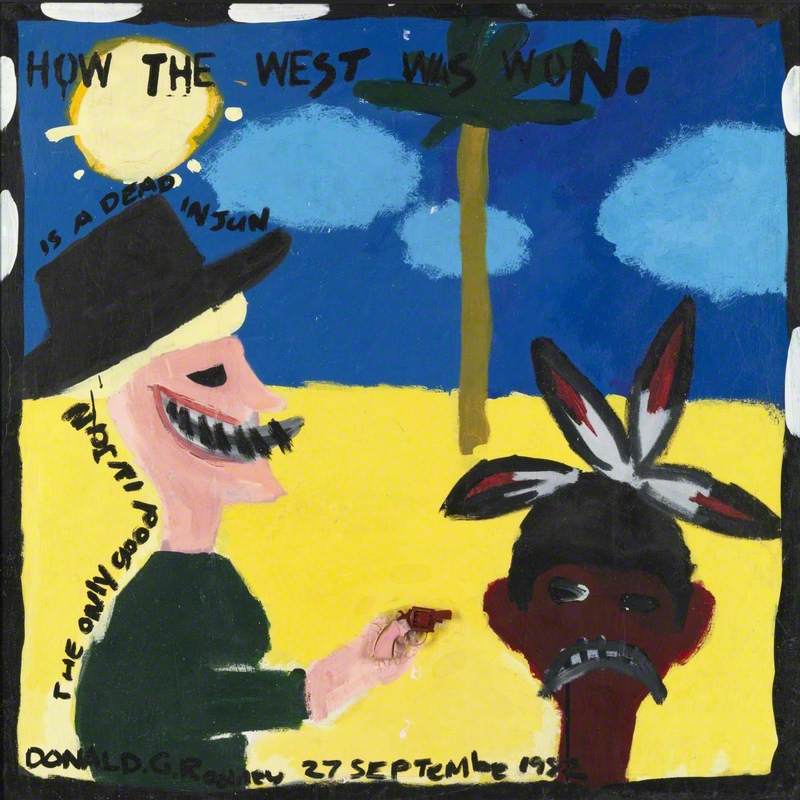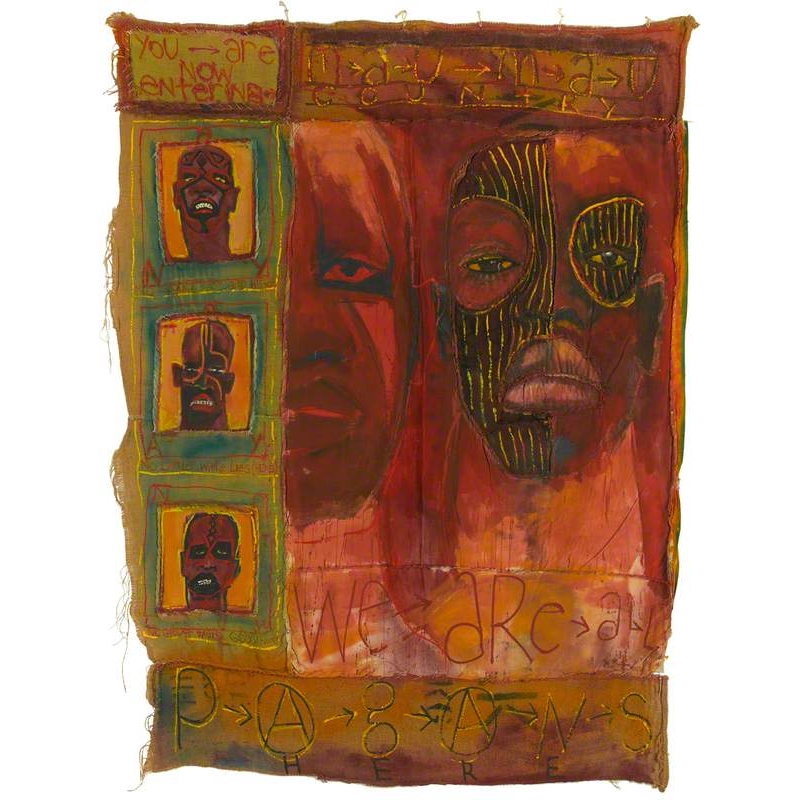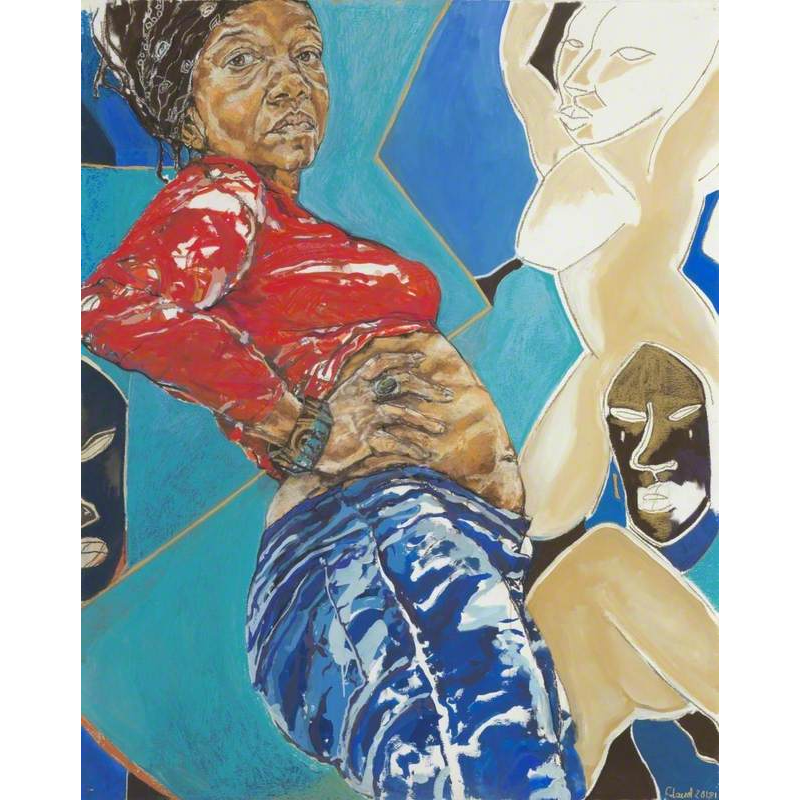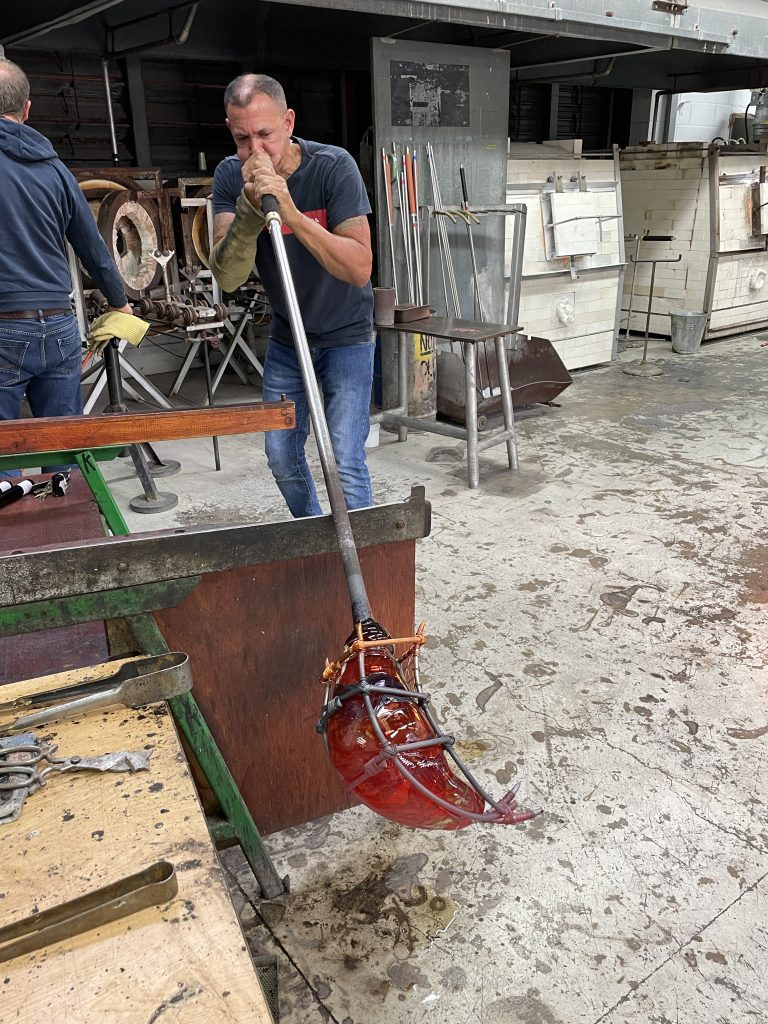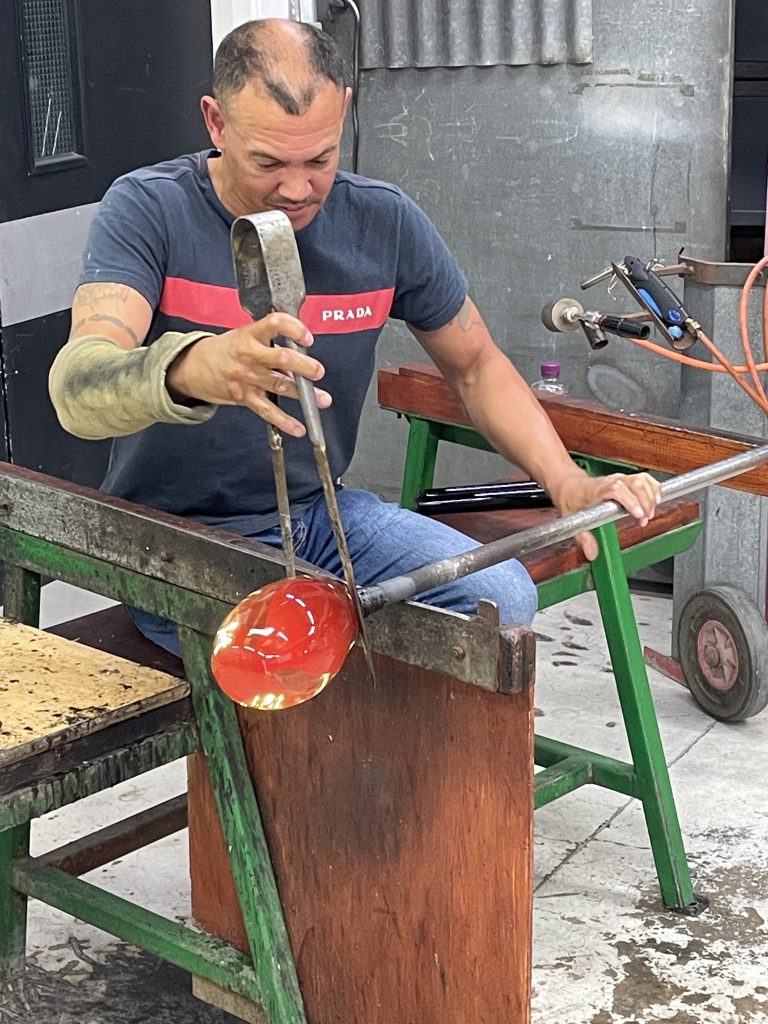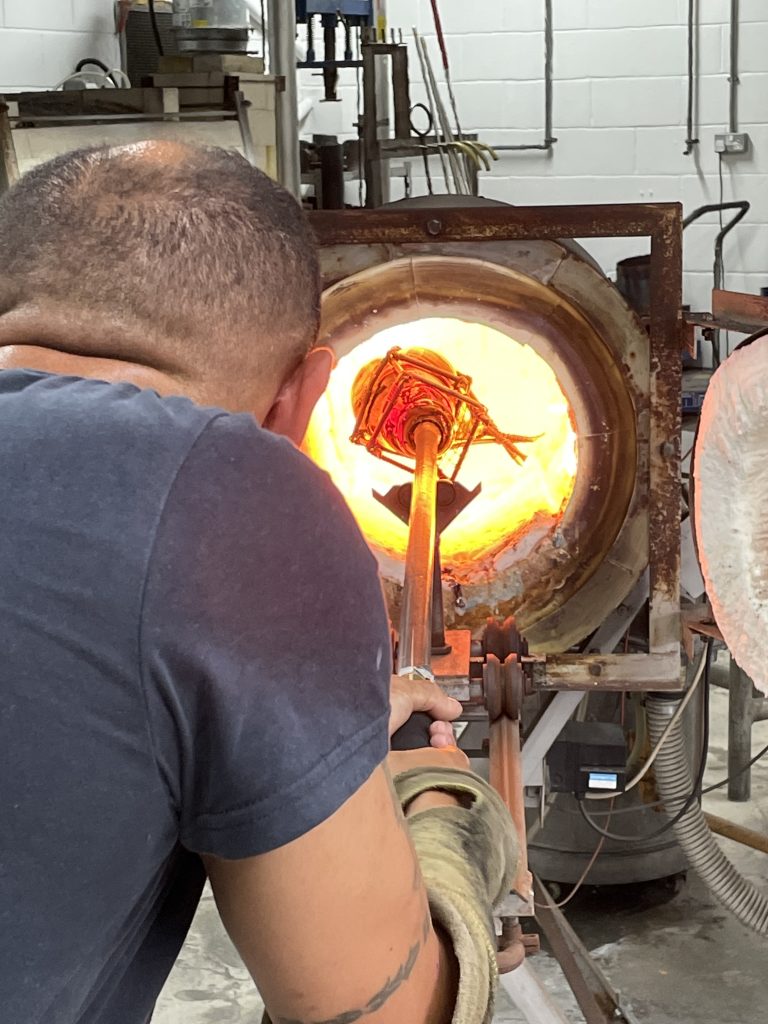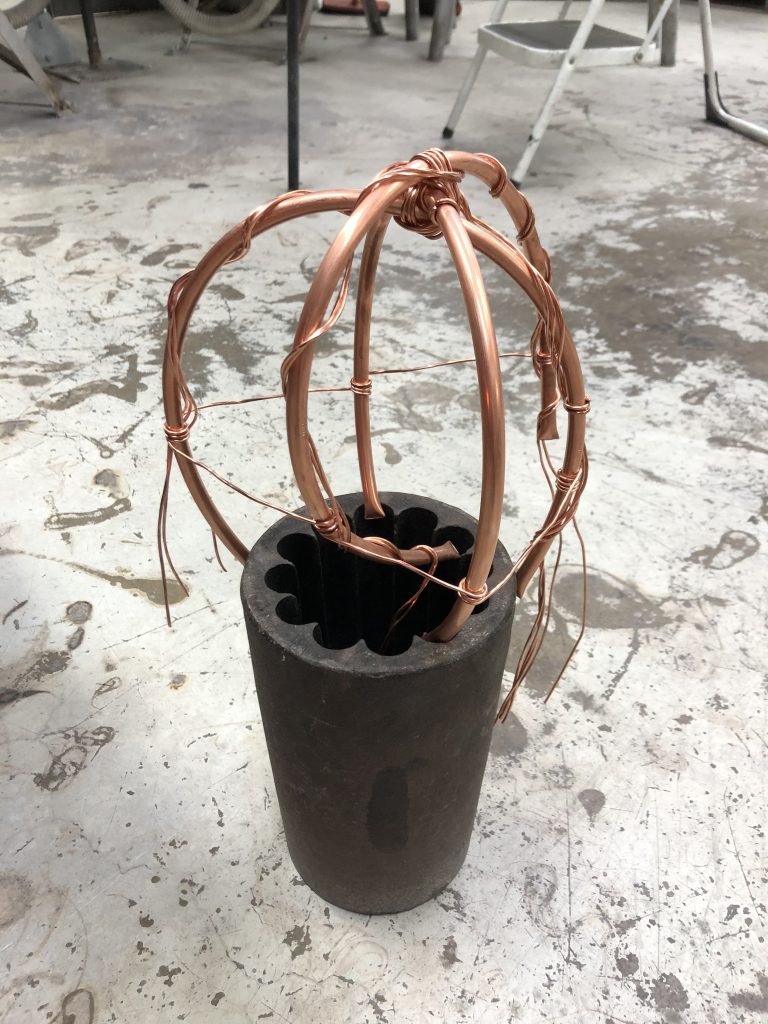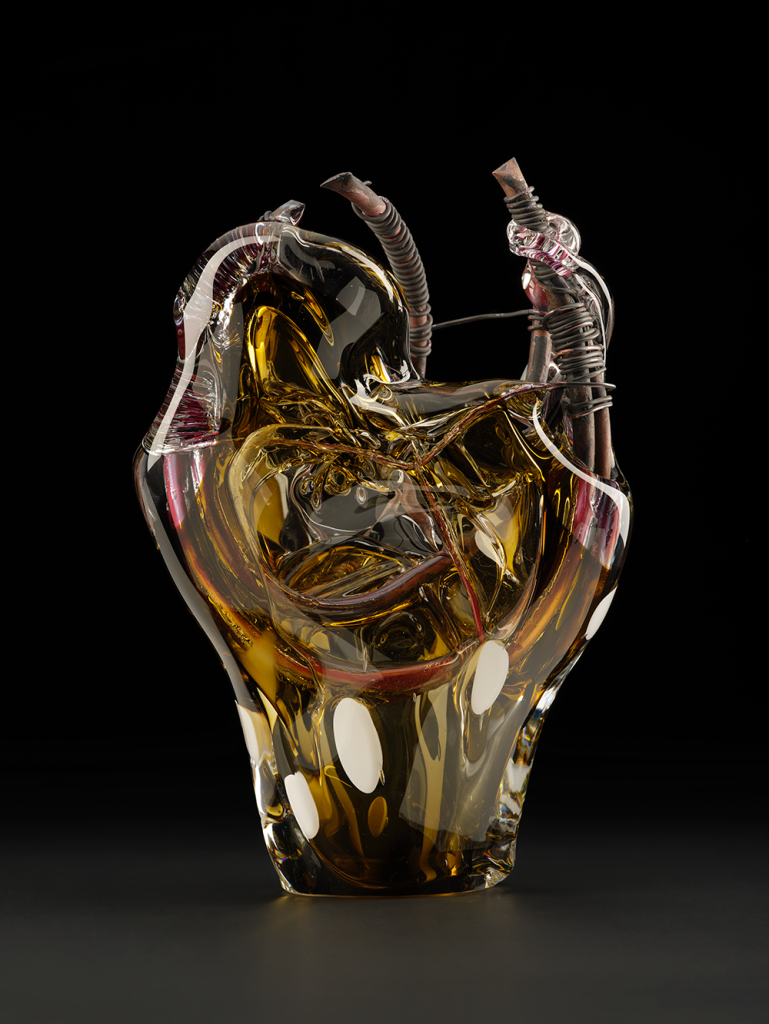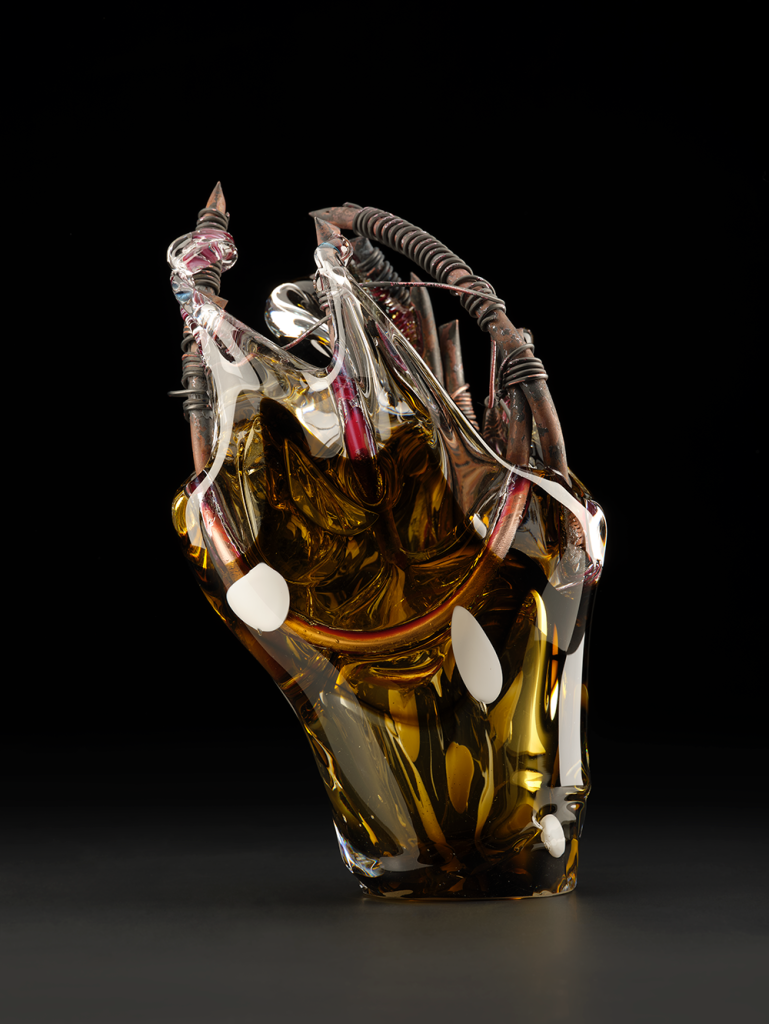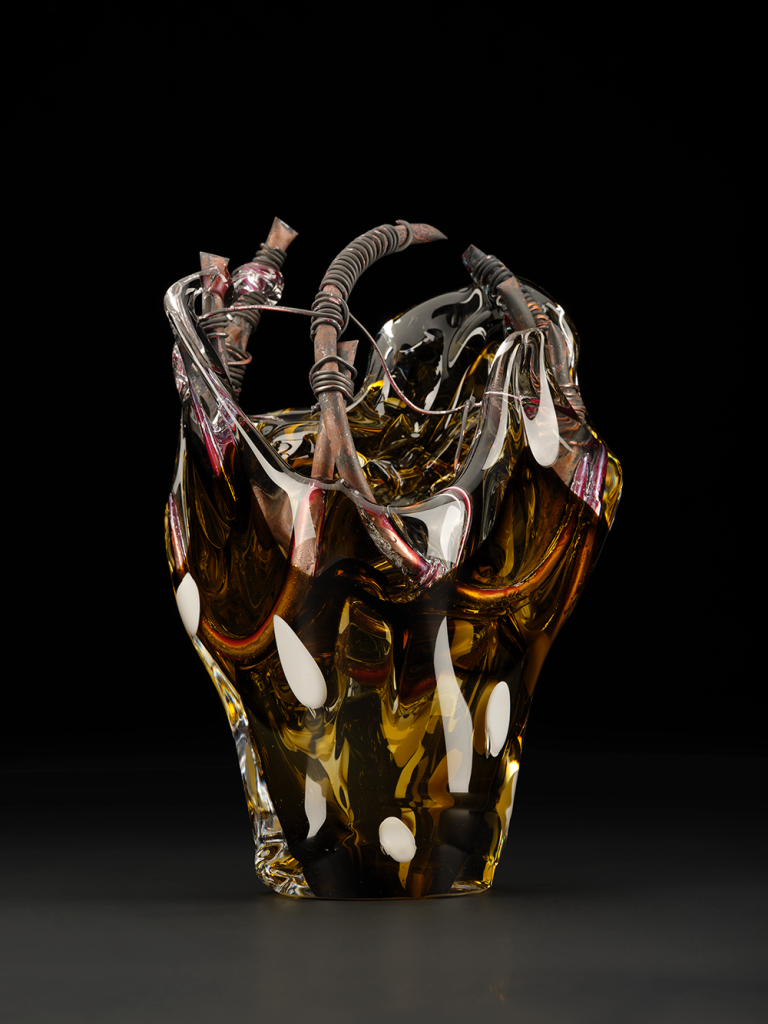Glass artist Christopher Day uses his craft to navigate what it means to be black in the UK, investigating complex topics and social tensions through the use of the personal. In this post, Chris explores his practice through the process of making Back to Black, a piece we recently acquired that will be going on display next year.
Introduction
My first encounter with artwork from the Blk Art Group came from a visit to Wolverhampton Art Gallery, which has a selection of work in its collection. In 2016, I had started a degree course at Wolverhampton University Art School. For me, this was a huge hurdle to jump after being diagnosed dyslexic. Growing up with no internet to scroll through, I found it hard to concentrate when reading books, which has been a struggle my whole life. Viewing pieces by Keith Piper, Eddie Chambers and Claudette Johnson was the first time I had ever seen work by Black artists and although the work was produced in the 1980s, it still felt fresh in what it portrayed.
My piece Back to Black was created to acknowledge the work done by the Blk Art Group which formed at Wolverhampton Polytechnic in 1979 (and is now the art school where I studied). Amidst growing racial tension towards the black community during this period, especially from the National Front, and perceived racist discrimination, due to the stop and search policy from the police, the BLK Art Group endeavoured to confront aspects of racism and expose it in a different light.
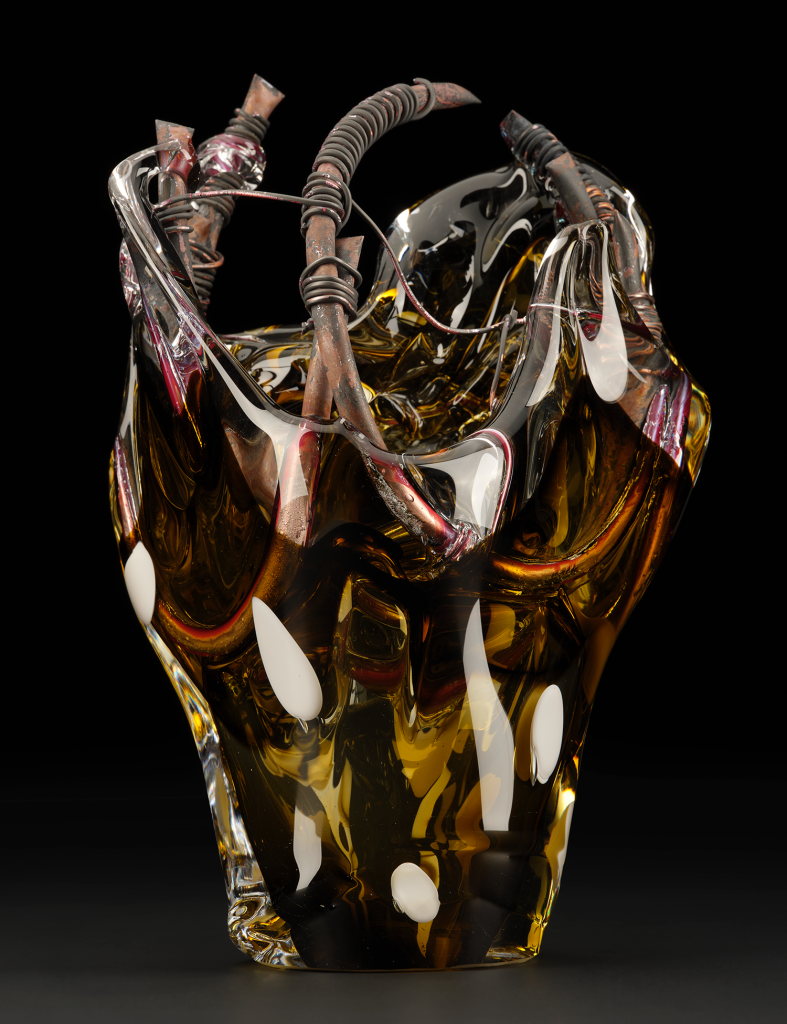
One reason why I chose to work with glass is its fragility. It reflects the human spirit and how vulnerable and delicate we are when faced with the harsh reality society has placed before us. Sadly, four decades on, not much has changed. Racism may have become more ‘polite’, but embedded institutional inequality still needs addressing. In 2019, this was brought into focus, yet again, with the killing of George Floyd.
Black Lives Matter
The Blk Art Group sought to tackle racism through art from the early 1980s, instead of the violence going on both in the USA and right on our doorstep. Rioting took place in Birmingham, Leeds, Liverpool, London, Manchester and Nottingham, which only fuelled the divide and gave those in control an excuse to use violence.
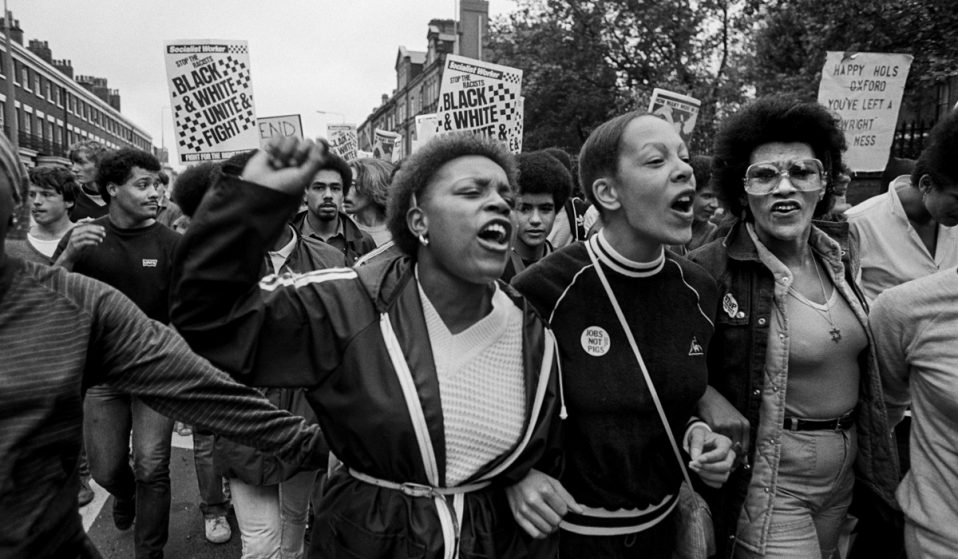
The exhibitions the Blk Art Group tried to hold in different venues were met with intolerance. Although perseverance allowed them to get their voice and message across. These same voices could be heard throughout the summer of 2019 with demonstrations in the USA and the UK. Pockets of humanity came together in protest over the unjust killing of George Floyd. Unfortunately, there have been thousands of George Floyds, unjustly killed just because of the colour of their skin.
In 2020 I had my very first solo exhibition at Vessel Gallery in London. At the same time, the country was in lockdown and Black Lives Matter was all over the media. I felt both an excitement and a great sadness. I wanted my work to engage with people and tell a story, but I was scared about how the public and art sectors would react. All of a sudden it had become political.
Being one of the few black artists whose work has an uncomfortable story to tell, Angel Monzon, the Director of Vessel Gallery, gave me enormous confidence boost in championing my first solo show. Although, at the time, it felt like we had both put our heads above the parapet.
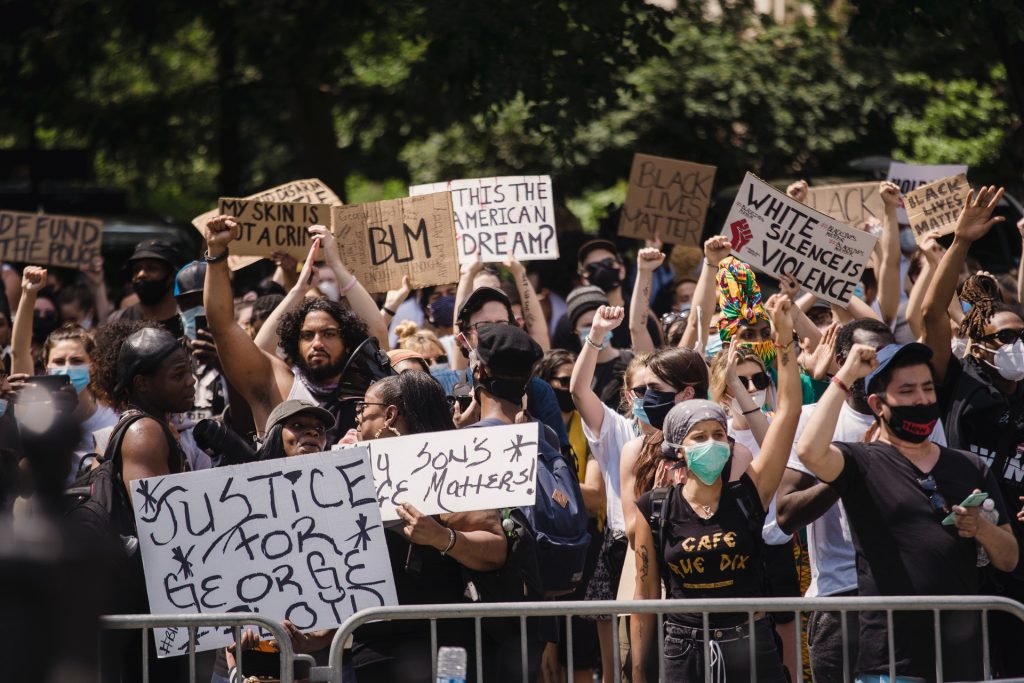
And this is where the rollercoaster ride really started. Showing my work created a storm in the art world and positioned me in a way I could never have seen five years ago. This brings me to National Museums Scotland.
After reading about and seeing my work on social media, Senior Curator of Modern & Contemporary Design Sarah Rothwell got in touch. As I spoke to Sarah, I explained how excited I was about the fact that the conversation surrounding my practice was now gaining attention, and due to interest from Museums like her own, the stories I wished to expose will now be in the public domain forever and engage with a wider audience.
Back to Black
The process of making Back to Black started with a very emotional and educational journey into my own ancestry, from Jamaica and all the way back to Nigeria in Africa. Through my work, I saw a chance to expose the brutal historic episodes that Black people had to endure, from the Transatlantic slave system to segregation in America, as well as the knock-on effect for British Black communities. Many of the stories have been lost in the history books and, like the Blk Art Group, my aim is to shine a light on them and give these stories the exposure they deserve.
The materials I use to create my artwork embraces the conversation surrounding racism, segregation, slavery and the inequity society has built around the colour of a person’s skin.
The copper used in my work gives the glass a cage from which it is trying to escape. The cage itself is bound with copper wire, indicating that the cage has different degrees of constriction. I wanted to evoke what was observed during the civil rights movement when a black person’s rights and movements in society were restricted because of colour. And how through slavery every basic right was taken away from people to satisfy others’ greed of profiting from their labour.
While the cage acts as a barrier, the glass comes alive when heated to 1000 degrees and seems to have a spirit of its own. I don’t try to suppress it. Most of the work is done by the glass interacting with the copper cage and I usually have no control over the shape and forms that are produced.
I am so happy that National Museums Scotland chose to acquire Back to Black. I’m proud to shine a light on the work and legacy of the Blk Art Group who gave me the strength to carry the torch they lit so long ago.


